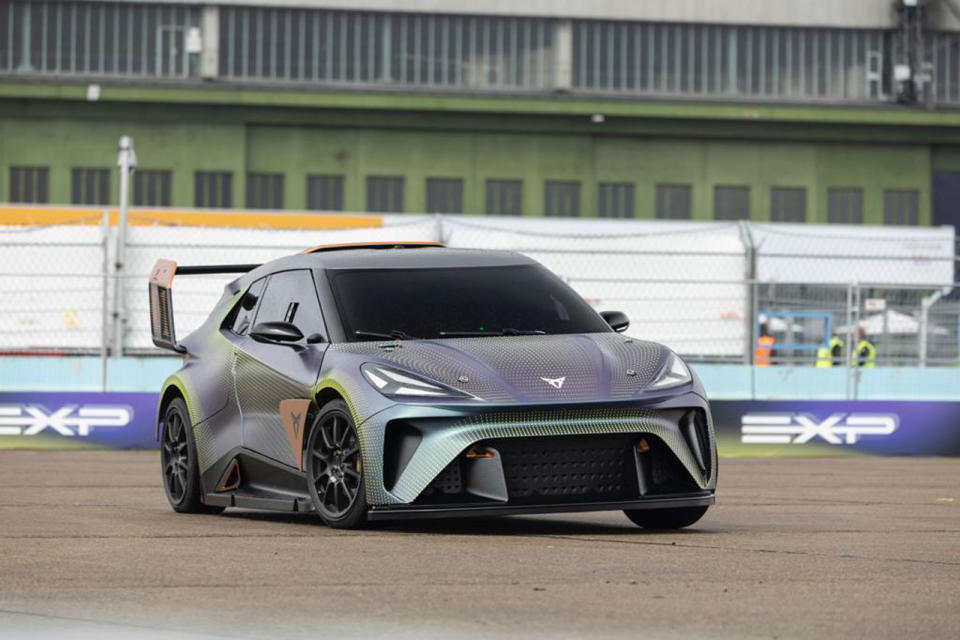Cupra virtual reality tech could reshape motorsport

Urban Rebel concept previews Raval hatch, due in 2025
Cupra’s new Exponential Experience – which allows people to drive a real electric racing car around a digital course seen using virtual reality (VR) goggles – has “huge potential to do things that nobody has done before” in both real and virtual motorsport, and elsewhere.
That’s according to former World Touring Car Championship racer Jordi Gené, who helped Cupra’s motorsport division develop the ‘phygital’ – merging physical and digital – system.
The Exponential Experience is built around the 430bhp Urban Rebel concept, which previews the forthcoming 2025 entry-level Raval hatchback but is in effect a purpose-built electric racing car.
While it can be driven normally, the car is also fitted with a VR headset, which then projects a digital reconstruction of a Barcelona street circuit into the driver’s vision.
It uses what Cupra calls a ‘reality loop’ system, so drivers can run over boost tokens on the digital track to give the car a real-world power boost.

Geofencing is used to ensure the car remains safe when the driver is unable to see the real world, and a co-driver is also able to stop the car.
Cupra has developed the concept in response to the rising popularity of gaming culture, with the idea that it serves as a potential way to merge real and digital motorsport in future.
Gené said a key development focus was on ensuring the virtual world was synchronised with the real-world sensations the driver experiences.
He said: “Normally when you use a simulator to test or learn a circuit, you know you’re in a simulator because your body isn’t moving properly. But with this, when you push, the car will slide for real, and the sensations are real. So you can learn a track with the real experiences.
“Nobody has put a proper simulator inside a racing car before. So the potential of it is as big as you can imagine. We could have one car physically racing on a circuit in Barcelona, taking on someone else who is racing on the same circuit somewhere else.”

Gené added that the tech is still under development and the team is working on a system that will produce real-world physical feedback when there is virtual contact between cars on the digital track.
Another key focus has been on minimising the lag time between translating physical inputs to the car into a response in the digital footage – the maximum delay has now been reduced to three-hundredths of a second.

 Yahoo Autos
Yahoo Autos 